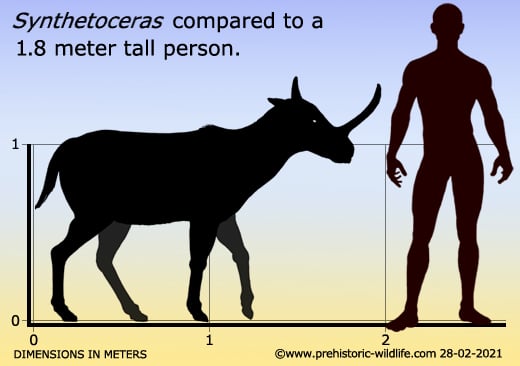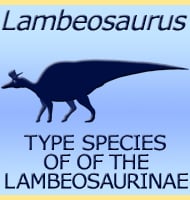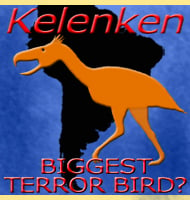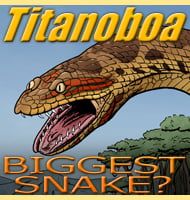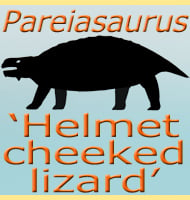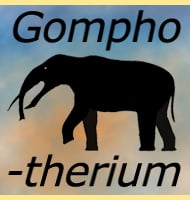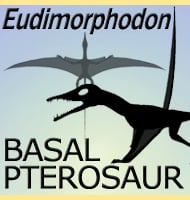In Depth
Synthetoceras is one of the better known members of the Protoceratidae, and this is thanks to the head ornamentation of the males of this genus. Rising above the eyes and ears was a pair of horns that curved upwards forming a crescent shape when viewed from the front. Then things get a little different with a single much longer horn rising up from the front of the snout. As this horn rises it splits again to form a V shape towards the top. Seemingly this horn was only present upon males, and was almost certainly a display feature not just serving for species recognition but for impressing female Synthetoceras. The horn may have also been a way for rival males to determine who was stronger, and when that failed, perhaps even become a weapon when disputes turned violent.
Like similar members of the Protoceratidae, Synthetoceras would have been a fairly nimble footed herbivore, relying upon staying alert and quick reflexes to remove itself from danger. Possible predatory threats to Synthetoceras could include certain false sabre toothed cats as well as bear dogs, though such predators would have needed to get in close for a successful ambush.
Further Reading
- A New Genus of Artiodactyla From the Clarendon Lower Pliocene of Texas. University of California Publications. - Bulletin of the Department of Geological Sciences 21(6):147-168. - R. A. Stirton - 1932. - Late Miocene mammals from the Mauvilla Local Fauna, Alabama. - Bulletin of the Florida Museum of Natural History 46(1):1-28. - R. C. Hulbert & F. C. Whitmore - 2006.
